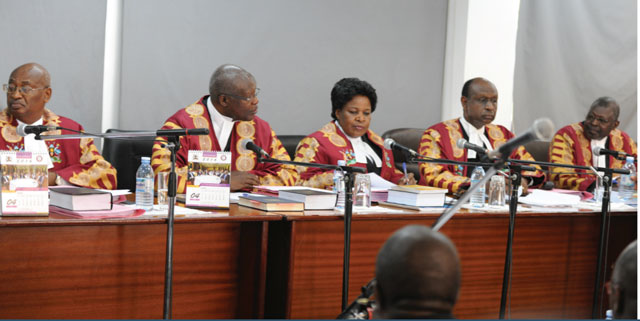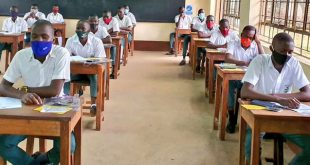
Those opposed to the election annulment say the Supreme Court subverted the will of the Kenyan people, while its supporters are calling for the arrest of Kenya’s electoral body officials and insisting fresh elections cannot be held under that body.
Kirwowa Kiwanuka, another defence lawyer in the Mbabazi petition, agreed with Karuhanga.
“We cannot make conclusions about whether it adds to jurisprudence before reading the judgment,” Kiwanuka said, “we have to wait for the details of the judges’ decision.”
However, for Mbabazi, even now the Kenyan ruling has a lot to offer. He said that to understand Uganda’s ruling in comparison with Kenya’s, one needs to look at the dissenting ruling of the two Kenyan justices.
“What did the dissenting judges say?” Mbabazi asked rhetorically, “they said that there was iota of evidence to prove noncompliance with the constitution and the electoral laws.”
That is exactly what our judges also unanimously ruled, he added. “No evidence, no evidence, we find no evidence” Mbabazi said while pointing to the Katureebe ruling.
“What does this tell you?” Mbabazi said, “That this is really down to the discretion of the judges. They can chose to see the evidence or not to.”
In the case of the majority ruling in Kenya, Mbabazi added, even before the ruling, the court said you (petitioner) want these documents, you will have them and we will also have our experts access them and give us their view.
“The court registrar went to the electoral body and made a report,” Mbabazi said, “court appointed experts to look at the servers.”
Mbabazi said that court in Kenya paid critical attention to the question of where the results were coming from—the transmission process—which was the heart of the Kenyan petition and ours too, the Ugandan court didn’t.
In Uganda’s case, Mbabazi and his team asked but were not allowed access to the servers for the Biometric Voter Verification Kit (BVVK), Electronic Results Transmission and Dissemination System (ERTDS), Declaration of Results (DR) forms, District Tally and District Return, which were all important to prove to court the extent of inconsistences in the results.
On access of the BVVK and ERTDS, the EC boss, Badru Kiggundu told court that it was impossible as they (EC) also didn’t have access to the servers of the system.
On the other forms, Mbabazi’s team was given just a few hours and even then they were given just the hard copies and not the soft copies, which made it impossible to compare whether what was in the system matched what was on the hard copies.
Mbabazi also said that while court accepted that for some districts—over 40 of them, partial results were declared, contrary to the law. Still the judges were not convinced that we tabled enough evidence.
Mbabazi also proved that in the case of Kabale district, police and the army had rounded off the district tally centre, forced the electoral officials to stop the tallying and got the Returning Officer to carry the servers to Kampala.
This evidence, in Hope Mwesigye’s affidavit, was not denied by the defence team. In fact, the returning officer told court that he had indeed carried the server to Kampala.
“This was a high level of nonconformity,” Mbabazi said, “And it was one of the multiple instances we proved before court but the judges found no evidence.”
 The Independent Uganda: You get the Truth we Pay the Price
The Independent Uganda: You get the Truth we Pay the Price


aaa美好的一天aaa